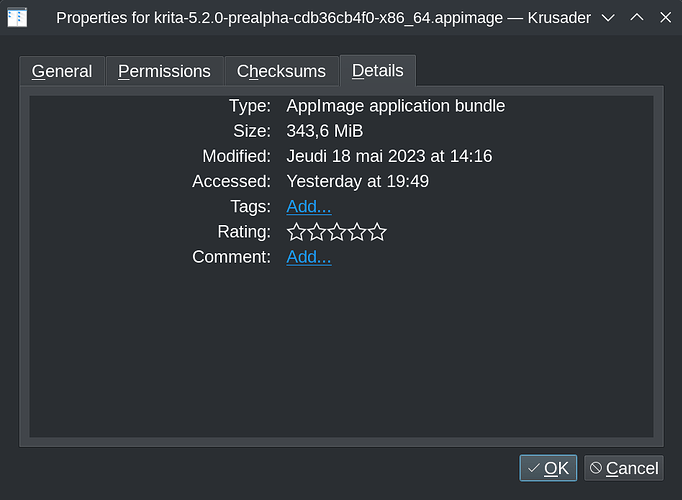As a user of KDE/Plasma I would like to know in general and without obligation if you use these so called extended file attributes or if you prefer something else or if you are not interested in such stuff?
By the way, there are no wrong answers here and I am a big fan of freedom of speech!

1 Like
Hi
What are extended file attributes?
Grum999
1 Like
That was a very good question, @Grum999, please give me a little time to answer.
Ok, I prefer to quote an excerpt from Wikipedia “Extended file attributes”, then no errors creep into the translation:
Extended file attributes are file system features that enable users to associate computer files with metadata not interpreted by the filesystem, whereas regular attributes have a purpose strictly defined by the filesystem (such as permissions or records of creation and modification times). […] Typical uses include storing the author of a document, the character encoding of a plain-text document, or a checksum, cryptographic hash or digital certificate, and discretionary access control information. In Unix-like systems, extended attributes are usually abbreviated as xattr. […] As of 2016, they are not yet in widespread use by user-space Linux programs, but are used by Beagle, OpenStack Swift, Dropbox, KDE’s semantic metadata framework (Baloo), Chromium, Wget and cURL.
And here is the link to the “Guidelines for extended attributes” from freedesktop.org.
1 Like
I don’t use it, I think.
But for what I understood it’s more something managed by linux kernel according to used filesystem rather than a specific KDE/Plasma thing?
In this case I’m not sure to understand the “As a user of KDE/Plasma”; it should be “As a user of Linux” no? 
Or there’s specificity to KDE/Plasma I miss?
Grum999
The most direct way to use them is via tags in Dolphin.
I don’t use this feature at the moment because I find it to be too buggy and unreliable, unfortunately. But if this state of affairs were improved, I would. Back when I was a macOS user, I extensively used the tags feature, which stored data in extended attributes just like Dolphin does.
1 Like
I don’t use Dolphin 
I’m more comfortable with Krusader and MidnightCommander UI
It’s seems in Krusader I can set some extended files attributes:
If I set some extended attributes, I can see them
$ getfattr -d krita-5.2.0-prealpha-cdb36cb4f0-x86_64.appimage
# file: krita-5.2.0-prealpha-cdb36cb4f0-x86_64.appimage
user.xdg.comment="test"
user.xdg.tags="ttest"
Nothing in MidnightCommander
But I never use them in fact 
Anyway I wasn’t aware of their existence, I may take a look about this to understand how it works.
Especially, moving a file from a directory to another one or doing a tar/zip if this extended attributes are kept or not…
Grum999
I’m very interested and I wish it would be more prominent. Currently the comment attribute is the most useful to me. Tags could be very useful, alas I’m bitten by the “baloo btrfs multi indexing”-bug, so every entry shows up multiple times.
The biggest hurdle is (testing for) interoperability. Which filesystem supports attributes, which tool/operation preserves them, what happens when you sync through the cloud with service X? A table/chart about it would be super handy, maybe it’s worth an entry on the Arch Wiki.
Tags could be very useful, alas I’m bitten by the “baloo btrfs multi indexing”-bug, so every entry shows up multiple times.
This may also have another cause. When I initially assigned tags, I did not pay attention to the spaces after the separator, but chose the natural notation. It looked like this: "Tag1, Tag2, TagX" instead of "Tag1,Tag2,TagX". As a result, the tags were separated but had leading spaces, from " Tag2" to " TagX". After I removed all (!) leading spaces the tag duplicates were gone.
1 Like
![]()
